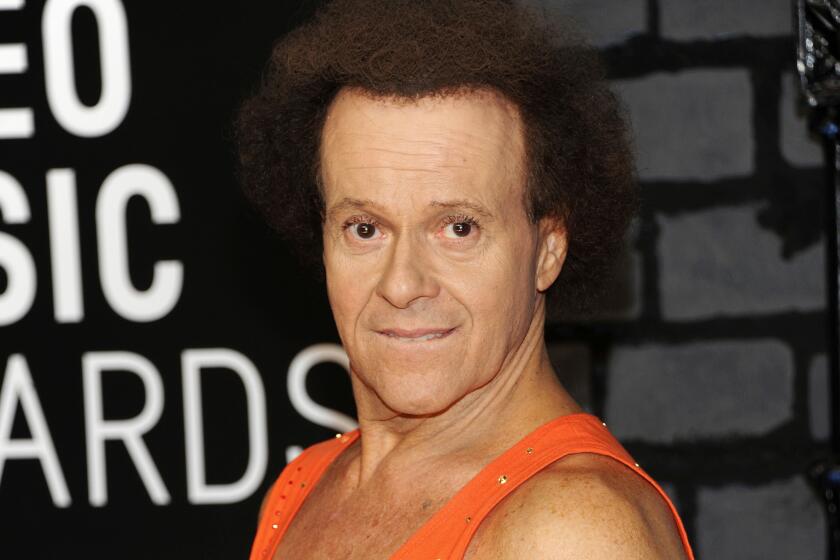For a fitness historian (and instructor), exercise is political
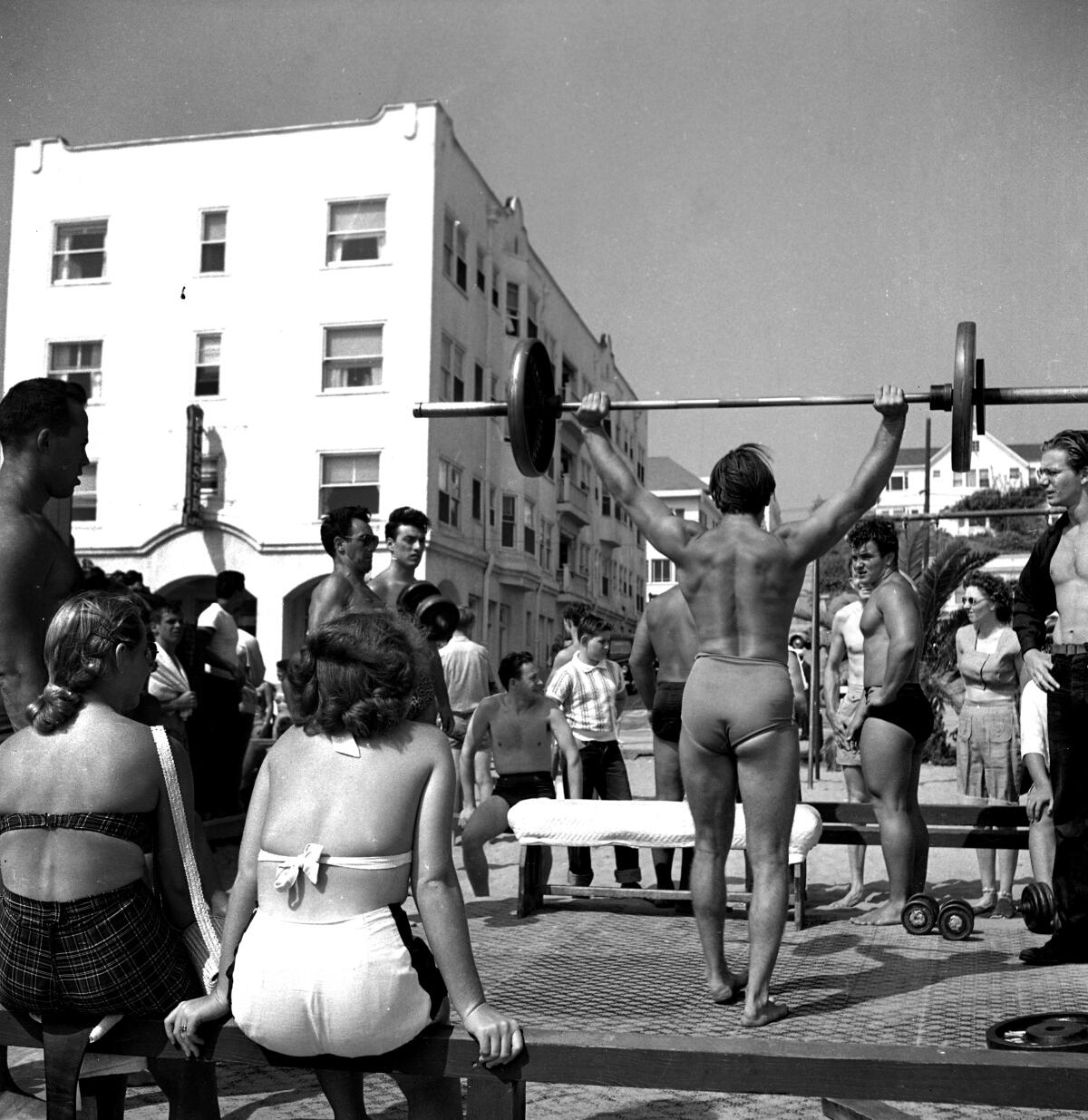
- Share via
On the Shelf
Fit Nation: The Gains and Pains of America's Exercise Obsession
By Natalia Mehlman Petrzela
University of Chicago Press: 424 pages, $29
If you buy books linked on our site, The Times may earn a commission from Bookshop.org, whose fees support independent bookstores.
At a time when the president is an avowed Peloton enthusiast, corporate bigwigs flaunt their treadmill desks and even your Aunt Linda tracks her steps on a FitBit, it’s easy to imagine fitness as forever intrinsic to American identity.
But as historian Natalia Mehlman Petrzela argues in her new book, “Fit Nation: The Gains and Pains of America’s Exercise Obsession,” our collective attitude toward exercise has shifted dramatically over the last century. Once viewed as the dubious pastime of vain eccentrics, “working out” is now venerated as an essential part of a healthy lifestyle. At the same time, it’s become, for many, an unaffordable luxury.
A professor at the New School in New York City, Petrzela is perhaps uniquely qualified to write about this subject: She is also a certified fitness instructor who once taught a class at Equinox called intenSati — “high-energy cardio with vocal affirmations,” as she explained in a recent video chat.
Like America as a whole, Petrzela was once wary of fitness. As a bookish adolescent in the ‘90s, she was “mortally intimidated by anything physical or athletic.” That all changed when she enrolled in a group fitness class. “I was like, I don’t know what this is, but it’s where I want to be,” she recalled. “It felt so good.”
Petrzela taught middle school and eventually landed in academia, but also pursued a second career as a fitness instructor — a fact she was often reluctant to share with her scholarly colleagues.
Richard Simmons, who is the subject of a new documentary about why he retreated from public view, addressed fans in a new Facebook post Wednesday.
At the gym, though, Petrzela never really took off her historian’s hat: “I kept asking the question: How did this fitness culture come to be?”
“Fit Nation” covers more than a century of cultural history, from strong man Eugen Sandow showing off his rippling torso at the Chicago World’s Fair in 1893 to the closing of gyms across the country during COVID-19.
It identifies a massive shift in the later 20th century, when the public — increasingly more affluent and sedentary — began to discover the value of yoga, jogging and dance aerobics.
While Petrzela revisits many well-known names — Jack LaLanne, Jazzercise, Jane Fonda — she also introduces less familiar personalities, such as Vic Tanny, whose gyms were outfitted with tropical fish tanks. There’s plenty of kitsch, including digressions on workout tapes by Debbie Reynolds and adult film star Traci Lords, but also powerful stories about Rosa Parks’ zeal for yoga and gay gyms that became community havens during the AIDS crisis.
Petrzela spoke to The Times about fitness inequality, potential political solutions and why working out doesn’t make you a neoliberal. The conversation has been edited for length and clarity.

Fitness is a subject that touches on so many crucial issues — race, gender, class, sexuality. Why hasn’t it been taken more seriously by historians?
I think there are a few things going on. They have to do with scholarly disdain for bodily pursuits, particularly the ones that women do. We have a lot of enthusiasm for serious books about working-class consumer culture, but they’re often about men. We love to talk about major league sports, Bruce Springsteen and rock music. But like, going to dance cardio? That gets dismissed.
The scholarly world has also really bought into this notion that neoliberalism has taken over all aspects of American life. There are quite a few critics who are too quick to just dismiss the gym as part of that. You see smart critiques, but they tend to be like, “This is just productivity culture, off-hours.” They overlook much more complicated, interesting and even empowering things that go on in these fitness contexts, and not just for women.
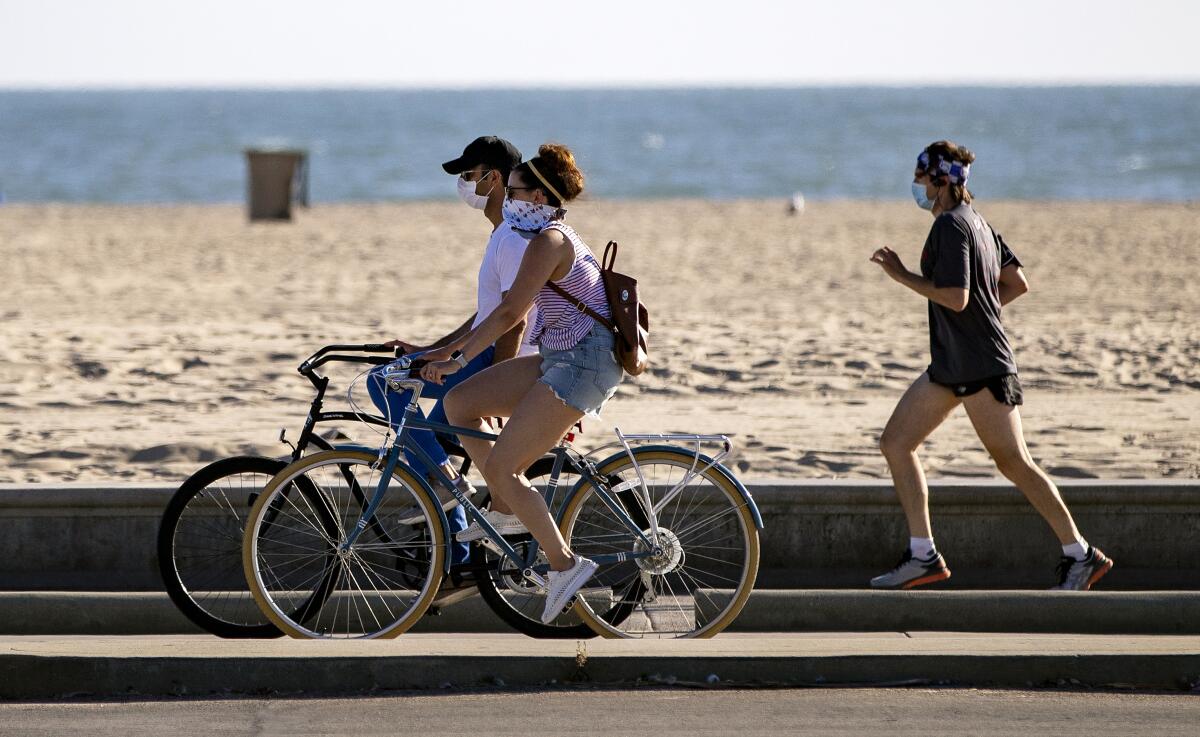
The first section of your book deals with American attitudes about what we now call fitness, which in the 19th and early 20th century was seen as suspect. Tell me about that.
This was a time when to go and exercise deliberately was considered weird. American society had not bought into the idea that mind and body are connected, and that working on your body is part of being a fully actualized human.
If you were someone who was spending too much time working on your body, you were probably neglecting more important things. That was a really gendered set of assumptions, though: men should be consumed with cerebral pursuits. A guy who’s spending time working on his body in the company of other men? There’s definitely something suspicious about him.
For women, it’s slightly different because it was considered normal for you to care what you look like. Even in the early 20th century, you have these “reducing salons,” almost like proto-boutique fitness. But also, sweating is considered strange for women, because what woman or girl wants to be muscular? Ew. The science of the time said that exercising too vigorously would compromise your fertility. There’s a long-standing myth that your uterus will fall out if you lift heavy weights or run too fast.
As you argue in the book, fitness is widely viewed as a worthwhile pursuit yet for many it’s also an unattainable luxury, in part due to political failures. How do we fix this?
The federal government started what, effectively, is a marketing campaign [in the ‘50s and ‘60s]. It’s really important in changing sensibilities, but it doesn’t actually change infrastructure or access in a way that would make fitness the human right it should be.
My optimistic stance is that most people agree exercise is good for you. That is something that transcends political affiliation. But we need policies that invest in public recreation and fitness environments. That might seem obvious. But there’s a host of other public things which contribute to fitness inequality that we don’t necessarily think of as related — safe streets, better streetlights, labor policies that allow people to have more control over their time so that they can actually make time to exercise.
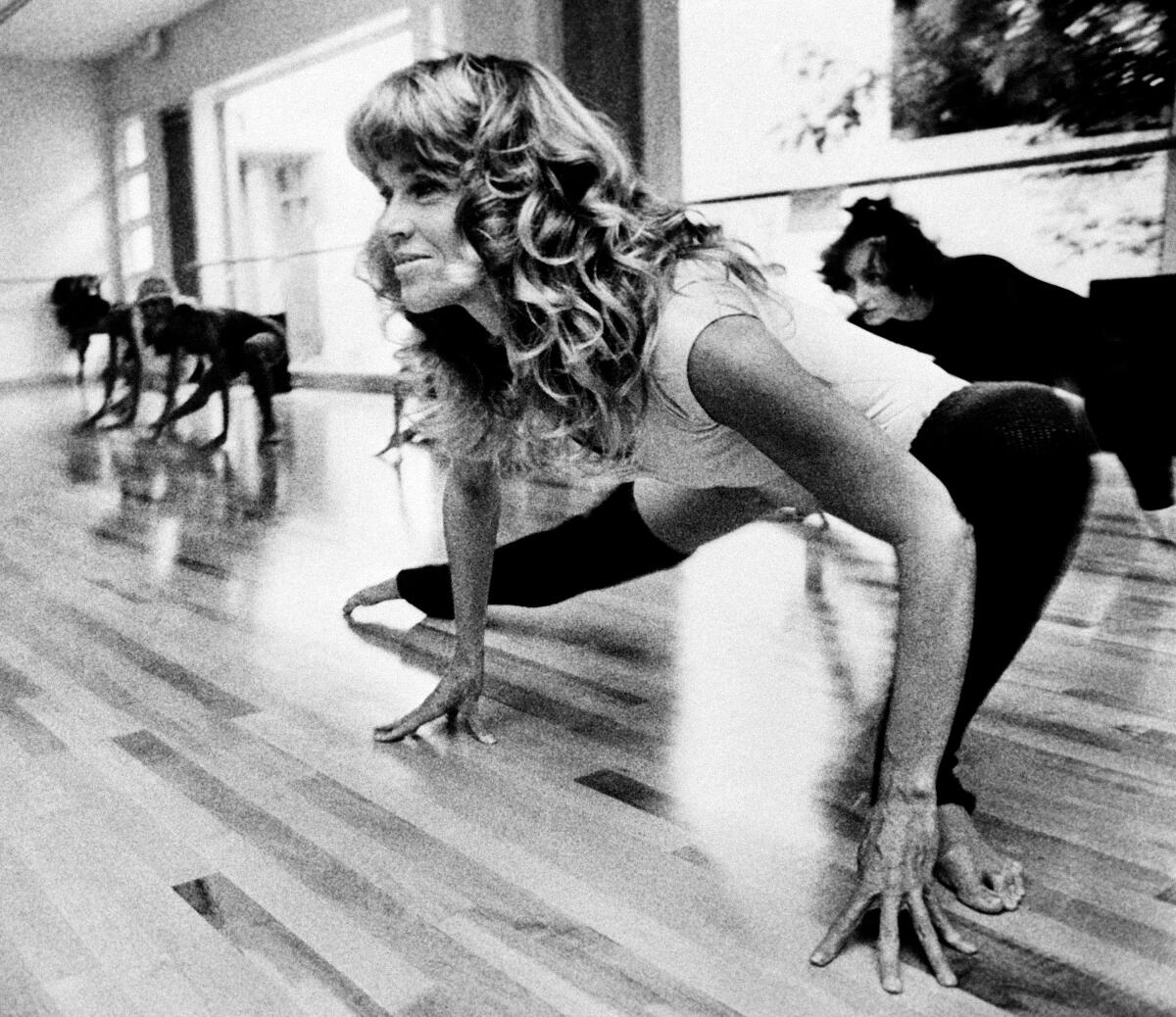
What role does California, especially Southern California, play in the story of American fitness?
It is a place that has always been hospitable to different kinds of experimentation, especially around health and spirituality. It’s a place where, especially because of Hollywood, image is important. Those things really come together in the fitness world.
This is probably the East Coaster in me romanticizing California a little bit, but I do think that geographically, it’s a place that has really sustained a connection to the idea of the self-made American dream. One of the reasons fitness culture becomes an American export globally is because it’s such a perfect arena to actualize these fantasies about self-fashioning that we have.
Another interesting piece is also technology. TV and VCRs are really important for spreading fitness culture. It’s no accident that Jack LaLanne makes his way from weird, seedy Muscle Beach to TV. I cannot overestimate how important [the VCR] was in spreading fitness culture. That is very much centered in Southern California, with Jane Fonda and Richard Simmons and others jumping on that.
From Crawford to Tony Soprano, Byrne explains the inspirations for her performance as a tormented aerobics instructor in Apple’s new show “Physical.”
If you could go back in time and work out with anyone, anywhere, what would you choose?
Can you tell I’ve thought about this? [laughs] I would love to be at the opening ceremonies of the 1984 Olympics in L.A. doing Jazzercise. I think it’s the only fitness brand that has ever been part of the opening ceremonies. I also would have loved to go to Richard Simmons’ class. And that makes me so sad because I just missed it.
There are a lot of very colorful figures in this book. Were there any you were particularly captivated by?
I would have loved to sit down with [pioneering weightlifter] Abbye “Pudgy” Stockton, who was this woman among the dudes at Muscle Beach [in the ‘30s and ‘40s]. Bikinis barely exist at the time so she has a bikini made for her to show off her muscles. She develops a strength training gym for women, and writes this column called “Barbelle” — B-E-L-L-E — assuring women that “beneath every lovely curve lies a muscle.” To me, she just embodies so vividly that push-pull that’s still with us, where she’s really breaking ground in terms of women’s fitness, but constantly having to be like, “Don’t worry, it’ll make you pretty.”
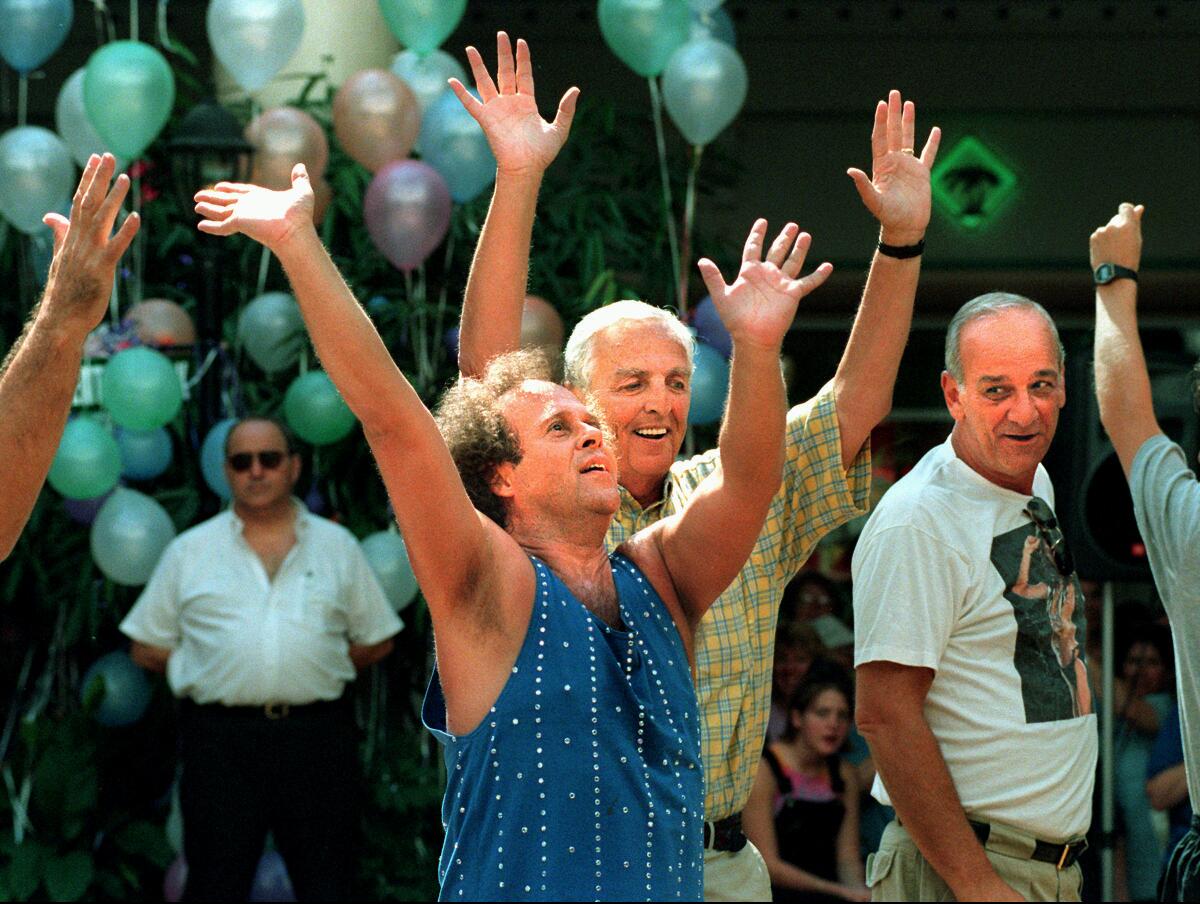
What’s the strangest exercise fad you came across in your research?
The weirdest thing was Stauffer’s Magic Couch. It was this huge piece of furniture that people bought to have in their house and it would shake you, like one of those [machines] at a reducing salon. It was supposed to “get you a new figure by Christmas,” as one holiday ad said. It was really remarkable to me that, at a time when exercise was still sort of weird, people would spend that much money and take up so much space in their house with this thing that was also a total scam.
How do you approach your work in light of the growing movement for fat acceptance and body positivity?
The fat-hating diet discourse is so loud in this world, and has for so long been the dominant discourse in fitness environments, that it’s really important for our fitness professionals and consumers to be very deliberate about resisting that. If I hear an instructor be like, “Bikini season is around the corner!” I’m probably not going back.
But we shouldn’t throw out the baby in the bathwater. We shouldn’t immediately say that weight loss is something no one should strive for or be allergic to talking about weight loss as a potentially health-promoting good. Nor should we throw out fitness culture because weight loss is part of it.
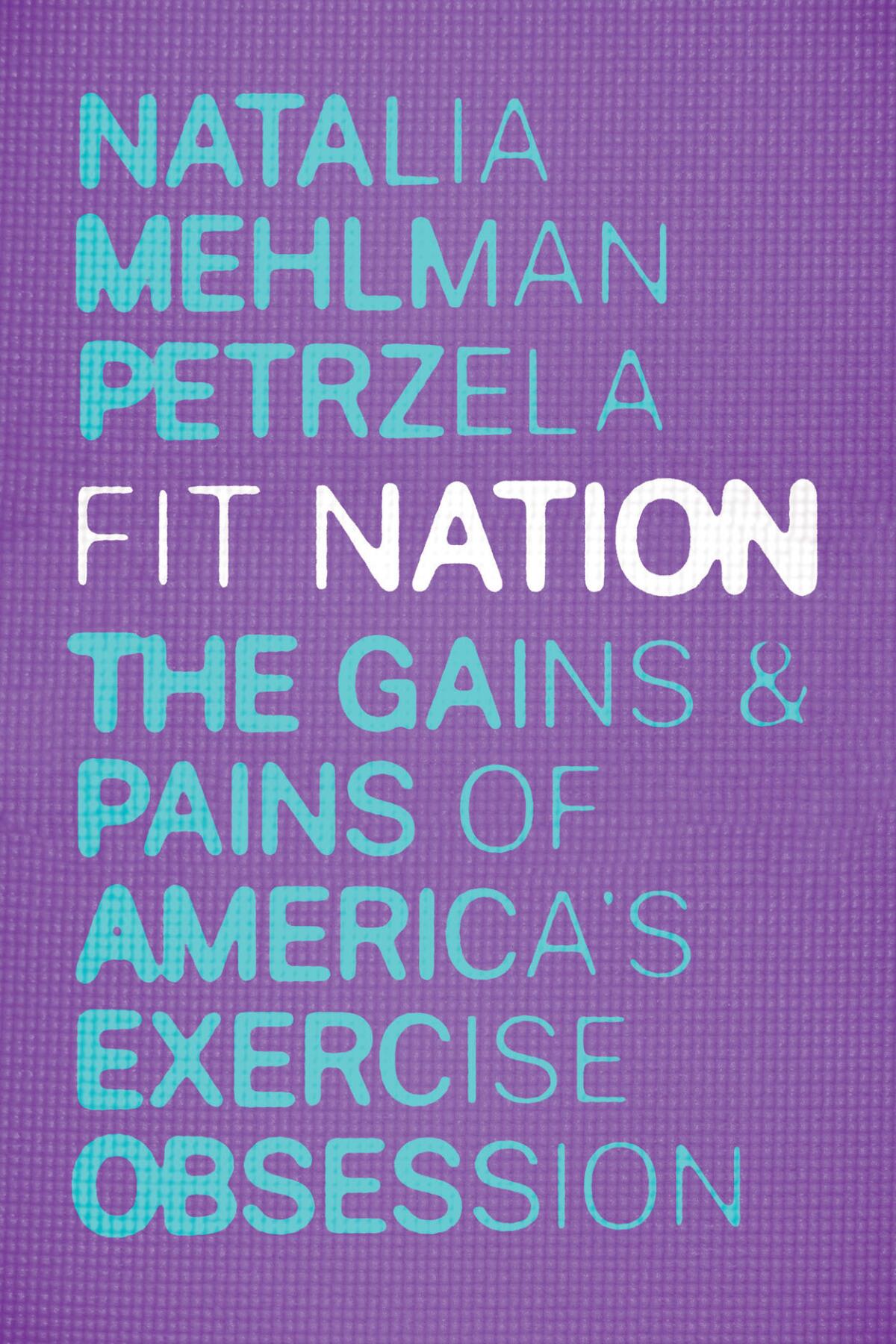
How do you see fitness evolving post-pandemic?
I really hope that all of the health drama and trauma that we’ve been through in the last three years brings new urgency to the importance of preventative health, fitness being a part of that. I hope the fitness inequality that’s been intensified [by the pandemic] will be redressed with policies that prioritize pools, parks and safe streets.
In the past two to three years, people have almost gone on an elimination diet with fitness, where you take everything away and add things back in to kind of figure out what’s meaningful to you. My theory is we are going to see a renaissance of what I call destination fitness, where people are very deliberate about going out into the world.
